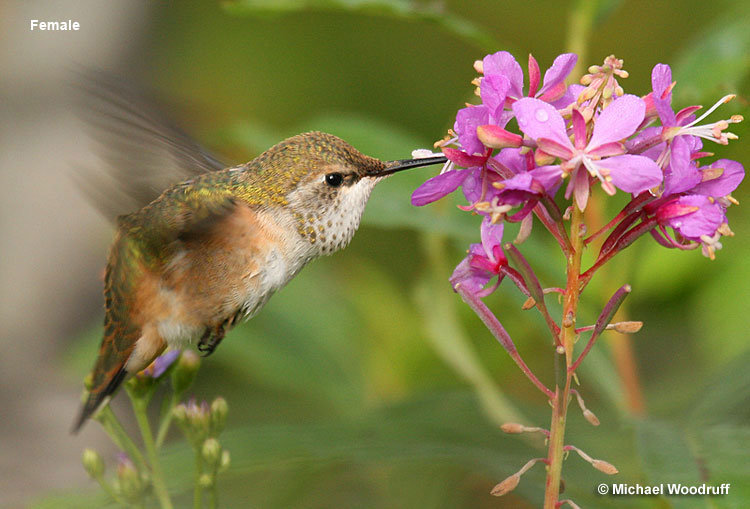
Hummingbirds are some of the most unbelievable birds on the planet. Small as a bug, shining, metallic colors, and living in their own fast lane, it’s hard to believe these birds are real!
However, not only are hummingbirds real, but you can also watch them right in your own backyard!
How can we attract hummingbirds to our backyards? Do they need certain plants or other features?
See this article to learn how to help hummingbirds and enjoy them at home!
Marvels of Nature
Hummingbirds are a real treat. Few birds have the same shining colors, and they entertain with whirring wings, hovering flight, and fearless attitudes.
While sparrows and other small birds are often nervous and quick to fly to cover, hummingbirds don’t mind us watching them at close range. They seem happy to have plenty of sugar water to eat, or maybe they know they’re too fast for us to catch them.
Watching them is a great way to relieve stress and truly enjoy your backyard. If you have a good camera, even better, hummingbirds are perfect subjects.
They aren’t always the easiest birds to photograph, but watch them long enough, and you’ll see where they perch. Taking pictures of hummingbirds in the backyard is also a great way to learn how to use your camera.
When we provide habitat for hummingbirds, we also do more than help ourselves. By providing hummingbirds with food and shelter, we are also helping them.
In a sense, by feeding them, we might be saving their lives; these special little birds need to eat most of the time, especially during migration. Fortunately, it’s not tough to attract hummingbirds. Provide them with the right food and they’ll find your backyard!
Tips to Attract Hummingbirds to Your Garden
Put up feeders for hummingbirds
Feeders are the easiest way to attract hummingbirds to any backyard. This is what most folks try and in most cases, it eventually works. However, if they don’t show up at first, be patient, hummingbirds are always hungry and looking for food. They will find your feeders at some point!
Related: Best hummingbird feeders
If your place isn’t close enough to woodlands or other habitat, hummingbirds might not appear at first. Don’t worry, those neat little birds will probably show up during migration!
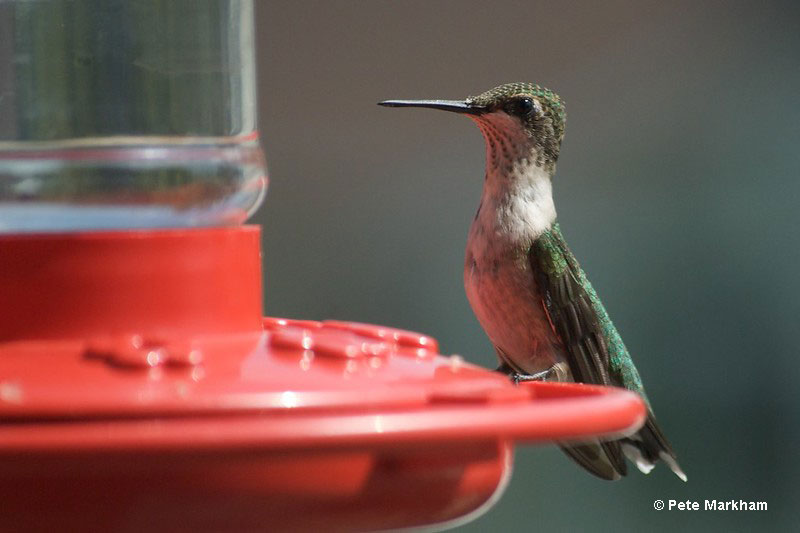
Lots of hummingbird feeders are available, but make sure to pick ones that are easy to clean. This is essential because you’ll definitely be cleaning them! When picking out hummingbird feeders, note that some also have small features that keep ants and other bugs away.
You can start with one feeder, but two are better. If you get lots of hummingbirds, you might want to get one or two more feeders or bigger ones.
Keep your hummingbird feeders clean and in the right places
Getting hummingbird feeders is a good first step to bring them into the backyard. However, you also have to install them in the right places and give them proper maintenance.
Similar to other bird feeders, hummingbird feeders are often hung from a metal pole.
By using a pole to hang a hummingbird feeder, we can adjust its height. This helps by keeping the feeder too high for a jumping cat or other potential predators. By hanging them at a fair height, the feeders can also be easier to watch.
Related: Do hummingbirds feed only on nectar?
An adjustable pole also makes it easier to access hummingbird feeders. This is important for refilling and cleaning them.
Regarding cleaning hummingbird feeders, they should be cleaned with boiling water every three days. If not, fungus, bacteria, and mold can grow in them that sickens and even kills hummingbirds!
Place the feeders in partially shaded places where you can enjoy watching your local hummingbird action.
In case ants find the feeder, there are plenty of ant moats available. Or you can make one yourself! Moats protect feeders from unwanted visitors, stopping them before they even reach the feeder.
Make feeders available during migration
Some folks don’t put up their hummingbird feeders until they see one or two in their yard. That’s reasonable because, after all, why put feeders out for birds that aren’t present?
The only problem with that thinking is that it doesn’t necessarily work for hummingbirds. While we can be sure that breeding hummingbirds are around in June, some migrate through the USA in March, April, September, and October.
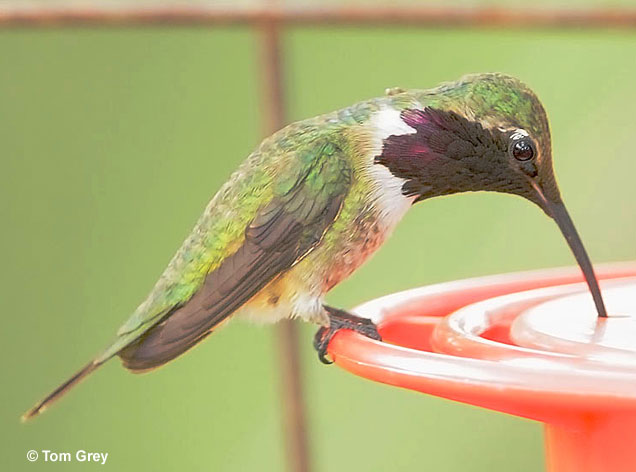
Hummingbirds need to eat lots of food at all times of the year, but maybe even more so during migration. Having flown hundreds of miles, by the time they come through your area, the small birds are in dire need of food.
Keep reading: When to put out hummingbird feeders?
They might not know where reliable food sources are and will wander until they find a place where they can feed. A backyard with feeders is the perfect foraging situation, and the migrant hummingbirds will be happy to take advantage of it!
Use red to attract hummingbirds, but don’t feed them red dye
Hummingbirds are attracted to some colors more than others. Although they can feed from all sorts of flowers, they seem to like red the most.
Red is the same color as some of their favorite flowers and is a perfect signal for food. In fact, as hummingbirds migrate and wander through the neighborhood, they can come in and check out small signs with red letters, and bits of red decorations.
The bright red on a feeder will also bring them in, and they’ll be rewarded with much-needed sugar water. It’s easy to make the divine hummingbird nectar for them: just add white sugar and water (one part sugar and four parts water).
However, never add red food coloring to the hummingbird food. The same goes for aversions; do not use honey or any artificial sweeteners.
Although many places have done this in the past, and it does attract the birds, it’s not necessary. Hummingbirds don’t need to see red sugar water to eat it. More importantly, red dye is bad for hummingbirds. Dye has components that can cause cancer and maybe other problems too, especially if hummingbirds eat large amounts of it.
Plant Coral Bells, Cardinal Flowers, and other plants hummingbirds feed on
Feeders are an easy way to attract hummingbirds, but they’re not the only food they eat. They can, of course, survive without feeders. After all, hummingbirds have lived without us giving them sugar water for millions of years.
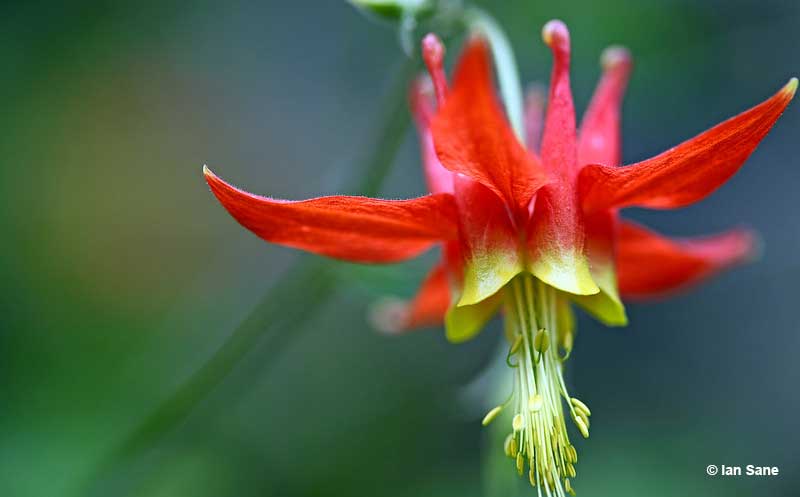
For most of history, hummingbirds have fulfilled their nectar needs by foraging at flowers. Plant those same flowers, and you can bet hummingbirds will come to your yard!
See more: Plants that attract hummingbirds
The main question is which plants to use. In general, any flower that is small and tubular will probably work, but there are some species that work better than others.
Some of the best plants are Coral Bells and Cardinals Flowers as well as Salvia species. Trumpet vine (sometimes called trumpet creeper), fuchsia, and honeysuckle are good options too!
Make sure to plant those flowers in spots where you can watch them bloom, or at least in places where they have plenty of room to grow.
Perennials and native plants are a great way to spice up your garden, too – after all, hummingbirds are attracted to colors.
By planting more flowers and other plants, your garden will inevitably turn into a safe haven for insects, too – bees love pollen, and spiders, ants, and other bugs will attract other birds as well!
Give hummingbirds a place to find shelter
First and foremost, hummingbirds need food. However, as with all birds, they also like some other aspects of their immediate surroundings.
For example, although a hummingbird will happily forage at most feeders and flowering bushes, it can’t stay there forever. At some point, the little bird needs to rest. They prefer spots where they can comfortably perch and keep an eye on their surroundings.
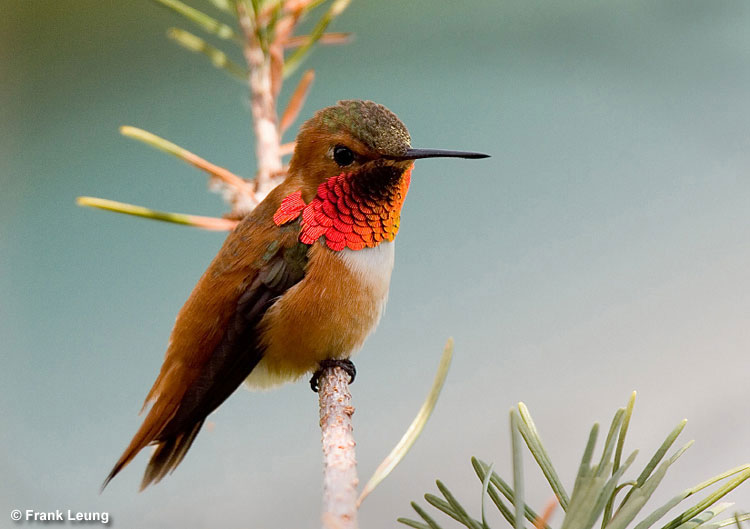
Since hummingbirds also have to return to feed again and again, they like to rest fairly close to their feeding source. Such resting spots don’t have to be right next to them but should preferably be within 20 feet of the feeding area.
Hummingbirds also need places where they can feel safe from the weather and from predators. Luckily, as long as some cover is available, their small size makes it easy to find a good, sheltered spot.
Bushes with dense vegetation will work, shrubs, as well as trees.
Hummingbirds love water features
Another factor that brings in hummingbirds is water. Like other birds, hummingbirds also love water. They don’t need big lakes or rivers or even marshes but do like places where they can bathe.
For a small bird, that doesn’t amount to much, and that makes it even easier to provide them with a suitable water feature. Hummingbirds will come to the same bird baths that larger birds use as well as small ponds, and small fountains and sprinklers.
However, when cardinals and other large birds are present, hummingbirds will usually avoid them and wait their turn. To give hummingbirds a good place to bathe, use a red fountain with shallow bubbling water, or a separate, small fountain.
A small fish pond will work, too, but check it first. If the pond has bass or Bullfrogs, you don’t want hummingbirds going there! Both large fish and Bullfrogs can catch and eat hummingbirds!
Don’t use pesticides
To attract and keep hummingbirds in our yard, we have to do more than provide the birds with food. They also need a good, safe place to visit or they’ll find a better place to live. Unfortunately, they can also be harmed by certain practices.
One such thing to avoid is using pesticides. Although chemicals can protect plants and make them look green and healthy, the poison removes other forms of life.
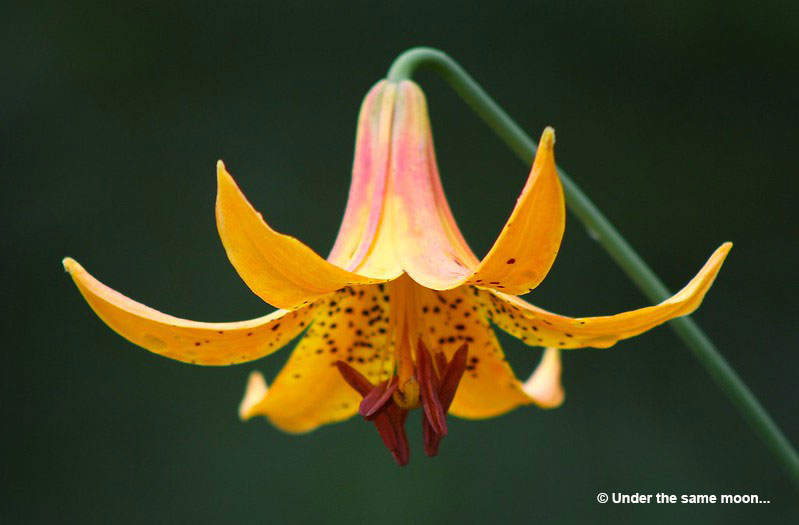
Hummingbirds love bright-colored plants, so don’t taint them with pesticides.
Whether we like them or not, insects are vital for every ecosystem. In fact, insects are essential for most birds. Without them, we wouldn’t even have most bird species, hummingbirds included.
Hummingbirds do feed on nectar but they also eat a lot of small insects, a lot more than you think! They also need to eat them, especially when nesting and before migration.
When we kill off the insects in the yard, that important food source disappears along with our hummingbirds and other bird species.
Make your windows bird friendly
A second thing to do to make your backyard hummingbird-friendly is to make your windows bird-friendly. Sadly, like other birds, hummingbirds are susceptible to flying into windows.
The hummingbird sees greenery reflected in a window, thinks it is flying to vegetation, and flies straight into the window. Tragically, most do not survive.
Even if they fly away, usually, the bird has a severe brain injury and dies shortly after.
Fortunately, there are several solutions to keep birds from flying into windows. Anything to break up the reflection or make birds realize that something solid is there will work.
Windows that use an adhesive covering to make it appear solid from the outside are good, as are decals stuck on the window.
Vertical strings hung across the front of a window also work. You just have to make sure that these solutions are not more than two inches apart. Otherwise, birds can try to fly between them!
Keep cats inside
The other main factor to attract and keep hummingbirds in your yard is keeping your cats indoors. While it might seem hard to believe, every domestic cat has fantastic bird-killing abilities, and will instinctively hunt and kill birds.
As fast as hummingbirds are, these small birds are no exception. Outdoor cats have quick reflexes that help them to routinely catch hummingbirds. They can wait undercover to run out and ambush an unwary hummingbird, or just keep watching and waiting until they spot a tired bird that would be easy to catch.
When tired and hungry hummingbirds visit backyards during migration, this can be a problem.
The main solution is just making sure your cats are kept indoors. Since outdoor cats also have to deal with dogs, cars, disease, and other dangers, keeping our beloved pets inside will be better for them anyway.
Read next: Fun Facts About Hummingbirds

